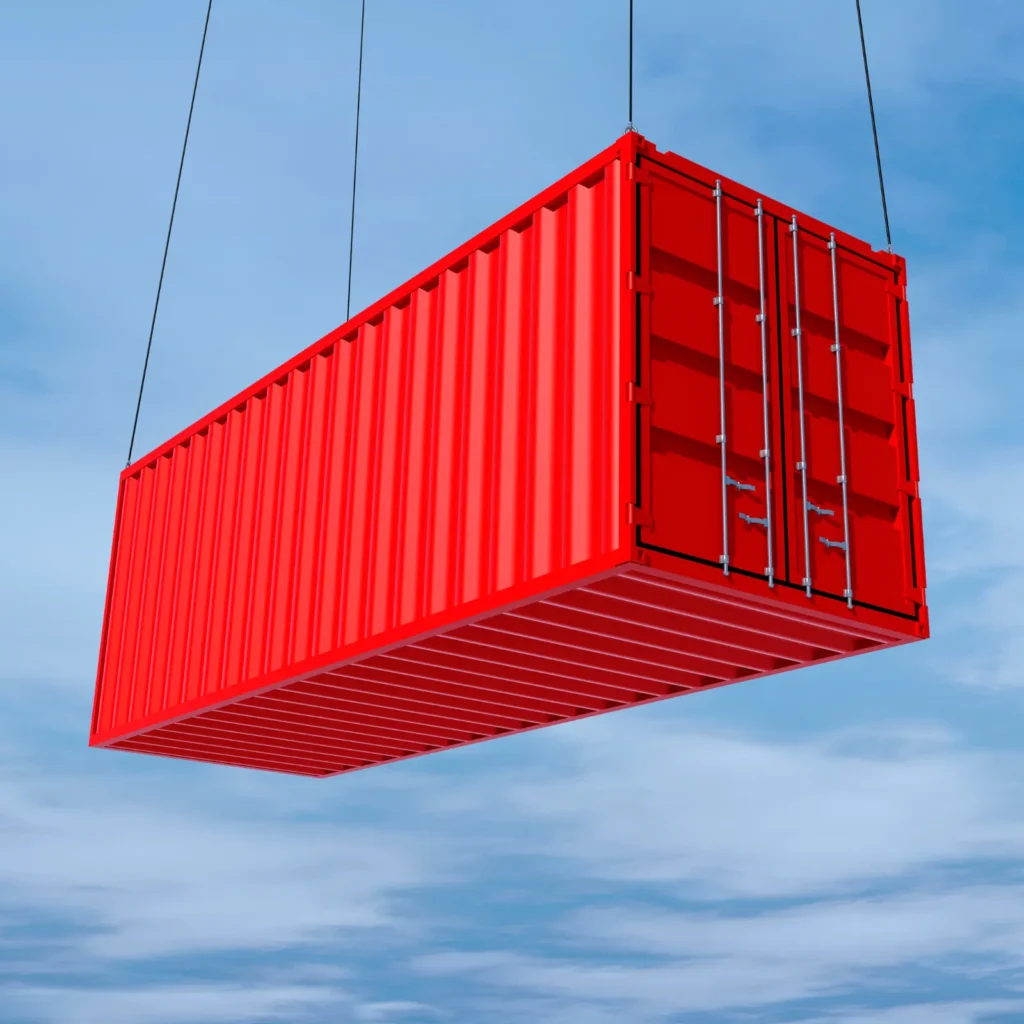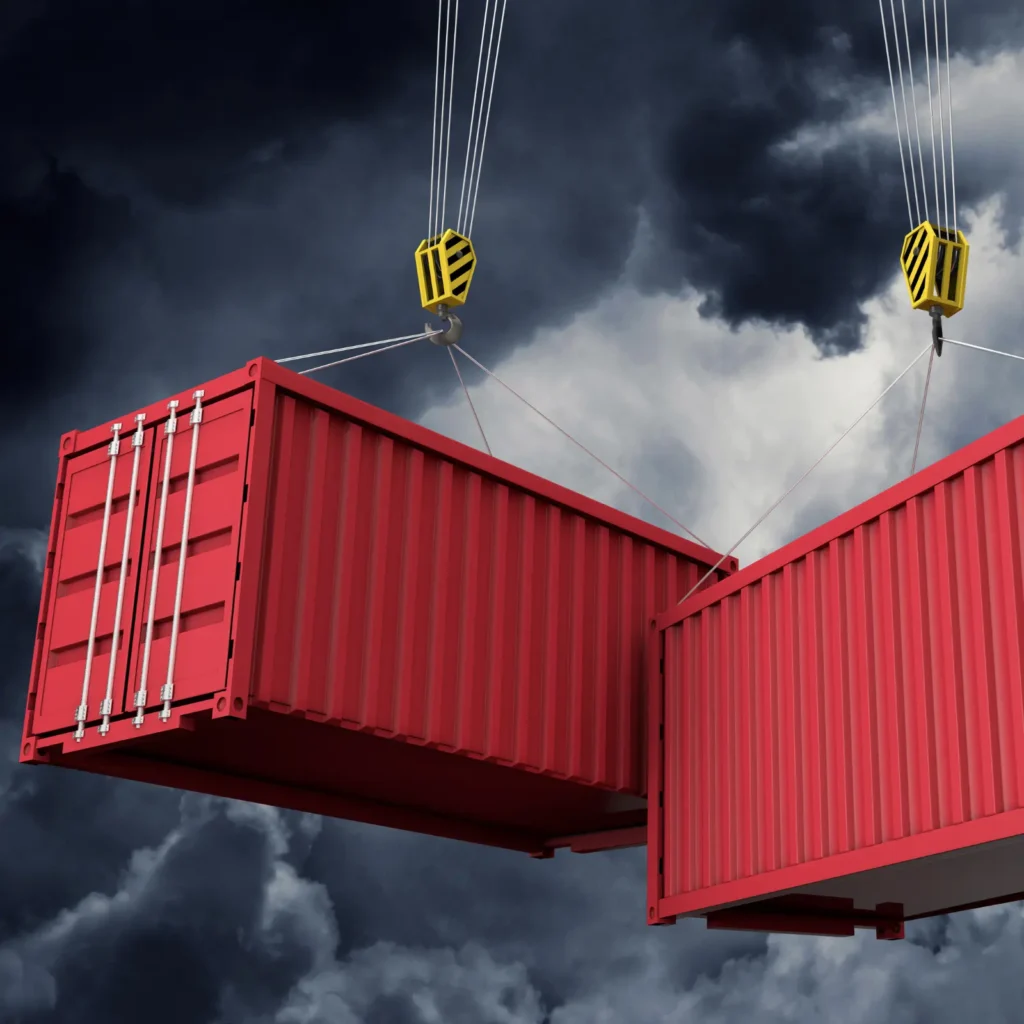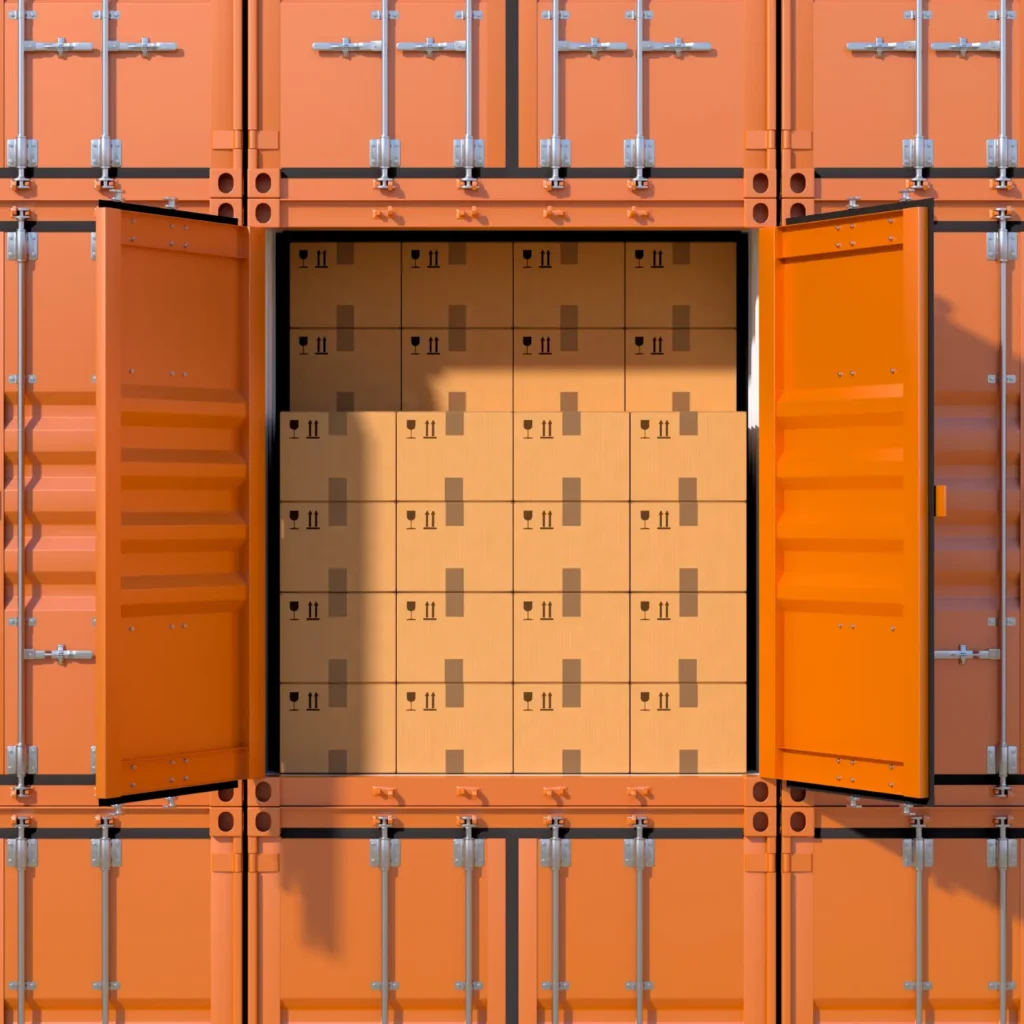A storage shipping container is essentially a large, standardized metal box designed for transporting goods securely across long distances, typically by sea or land. However, their role extends beyond just transport. Today, these containers are also used in various settings for static storage, providing a robust and secure environment for goods. Their rectangular shape and strong materials make them ideal for stacking and storage, optimizing space in limited areas efficiently. Given their durability and security, shipping containers are a popular choice in industries that require a safe storage solution.

Types and Features of Shipping Containers
Standard Sizes
One of the most common sizes is the 20 ft shipping container for sale, which offers ample space for most storage needs without occupying too much physical ground. This size is ideal for both commercial and personal use, balancing capacity and manageability. Additionally, conex shipping container options are available, which are similar in design but can feature modifications like side openings or integrated shelving systems, enhancing their usability for different applications. These variants provide flexibility for users who need adaptable storage solutions.
Material Specifications
Steel shipping containers for sale are highly valued for their robustness. Made from corrosion-resistant steel, these containers are designed to withstand harsh weather conditions, including heavy rain, strong winds, and even salty marine environments without deteriorating. The strength of steel also provides excellent security against break-ins, making these containers a top choice for transporting and storing high-value items securely. The material’s durability ensures that the container can be reused for many years, making it a cost-effective investment for both businesses and individuals.
Security Features
When discussing secure shipping containers, it is essential to highlight their built-in security features. Most containers are equipped with lock boxes that protect padlocks from being tampered with or cut, adding an extra layer of security. For higher security needs, containers can also be fitted with alarm systems and tamper-proof seals, ensuring that any unauthorized access is detected immediately. These features make them an excellent option for safe shipping container storage, where the protection of goods is paramount.
Insulation and Ventilation Options
Steel containers are prized for their security and durability, providing a robust solution for storing and transporting a wide variety of goods. However, their metal construction can also pose challenges, particularly related to temperature control and air quality. To address these issues, integrating insulation and ventilation systems is highly advantageous. Insulation is crucial as it acts as a barrier against extreme temperatures, whether scorching heat or cold. This is particularly important for sensitive items like electronics, which can suffer functional failures if exposed to significant temperature fluctuations, or pharmaceuticals, which may degrade unless stored within strict thermal conditions. Furthermore, insulated containers are more energy-efficient as they require less energy to maintain a controlled internal climate.
Ventilation systems complement insulation by managing the air quality and moisture levels within the container. Without adequate ventilation, the sealed environment of a container can lead to the accumulation of condensation. This moisture can be disastrous, leading to the growth of mold and mildew, which can damage organic materials and create health hazards. Moreover, effective ventilation helps to eliminate any odorous or toxic fumes that may emanate from the stored goods, which is essential for both the safety of the handlers and the preservation of the container’s contents. Overall, the integration of insulation and ventilation systems not only extends the lifespan of the stored items but also broadens the utility of containers, making them adaptable for purposes beyond simple storage.
Practical Applications of Shipping Containers
Moving and Relocation
Moving shipping containers offers a robust solution for relocating goods. They are specifically designed to protect contents from the rigors of transit, whether by road or by sea. This makes them ideal for both residential movers and businesses looking to relocate without the risk of damage. Their standardized sizes and ease of handling facilitate efficient loading, unloading, and stacking, which speeds up the moving process and reduces logistics headaches.
Static Storage Solutions
In settings where permanent or semi-permanent storage is required, shipping container storage units prove invaluable. They can be deployed quickly in a variety of environments, from construction sites and farms to educational campuses and retail parks. The containers serve not only as secure depositories for tools, equipment, and inventory but also as a means to free up valuable indoor space for other uses.
Offices or Creative Spaces
Shipping containers are becoming increasingly popular as a sustainable and innovative solution for repurposing spaces. These versatile steel boxes are ideal for conversion into various types of environments due to their inherent durability and modular nature. Below are ways to transform a shipping container for different functional needs:
- Basic Office Conversion: Transforming a shipping container into an office involves several crucial steps. First, install insulation to maintain a comfortable indoor temperature and mitigate external noise. Next, frame out the interior walls to create a defined office space. Adding electrical wiring is essential for lighting, computers, and other office equipment. Finish the interior with drywall for a clean, professional look. This setup provides an efficient, contained workspace ideal for startups or individuals looking for an alternative to traditional office rentals.
- Artists’ Studio: For artists, a shipping container can become a sanctuary of creativity. Start by incorporating large windows and possibly skylights to maximize natural light, which is essential for artists to accurately see their work. Built-in storage is critical for keeping art supplies organized and accessible, while the sturdy walls of the container offer a great opportunity for installing shelving or hanging artwork. Whether an artist works with enormous installations or smaller, more detailed pieces, this area may be tailored to meet their demands.
- Recording Studio: Creating a recording studio within a shipping container requires meticulous attention to acoustics. Begin by soundproofing the container using layered insulation and specialized acoustic panels to prevent sound leakage and external noise interference. Install the necessary audio equipment and consider the layout to maximize the acoustical properties of the space. For musicians, podcasters, or voice actors searching for a quiet, controlled space to create high-caliber audio content, this little studio may be the perfect option.
- Pop-up Retail Shop: A shipping container can be effectively converted into a mobile retail space. Equip the interior with versatile display shelves and adequate lighting to highlight merchandise. A functional checkout counter is necessary for transactions, while fold-out panels or retractable doors can transform the space, making it inviting and accessible to customers. This flexibility allows owners to set up shop at various locations, from urban streets to festivals, catering to a mobile, modern consumer base.
- Yoga Studio or Gym: Convert a shipping container into a tranquil yoga studio or a dynamic gym space. Install mirrors along one or more walls to enhance the feeling of space and facilitate form correction during exercise. Proper flooring, such as padded or rubber mats, is essential for comfort and safety. A quality sound system can enhance the experience, playing calming music for yoga or energetic tracks for workout sessions. Additionally, a fold-out deck can be included to extend the usable area, allowing for outdoor exercise options that complement the indoor activities.
Repurposing shipping containers into functional spaces not only contributes to environmental sustainability but also provides creative, flexible solutions for business and leisure activities. Whether it’s a cozy office, a vibrant artist’s studio, or a compact gym, these transformations showcase the potential of modular architecture to adapt and thrive in a variety of settings.

Special Use Cases
The speed with which these containers can be deployed is one of their greatest advantages. They can be transported and set up rapidly, often within hours, providing immediate relief to areas hit by earthquakes, floods, or hurricanes. This quick setup is essential in the critical hours and days following a disaster when shelter is most urgently needed. Once on-site, these containers can be fitted with basic amenities such as beds, sanitation facilities, and cooking equipment. The ability to customize each container based on the specific needs of a disaster scenario is a key aspect of their functionality as emergency housing solutions.
How to Buy Used Shipping Containers
New vs. Used Containers
When looking to purchase shipping containers, it is crucial to decide between buying new or used. New containers guarantee pristine condition and might come with customization options directly from the manufacturer. On the other hand, used shipping containers for sale cheaply can be a more budget-friendly option, though they may come with signs of wear and tear. Therefore, evaluating the purpose and the required longevity of the container should guide your decision.
Price Points and Budgeting
When planning to purchase a shipping container for repurposing, it’s crucial to understand the associated costs comprehensively. This detailed financial understanding helps in creating a realistic budget and timeline for your project. Here is an expanded breakdown of the various expenses involved:
- Initial Purchase Price: The cost of shipping containers varies widely based on whether they are new or used. A used container might cost a few thousand dollars, while a new one can cost over ten thousand dollars. Prices are influenced by the container’s size, condition, and market availability. Larger or specialized containers, such as those with refrigeration capabilities, can be significantly more expensive.
- Delivery Fees: The cost of delivering a shipping container to your site can be quite high, especially if the distance from the supplier is substantial. These fees generally include transportation costs and may also cover crane fees for offloading and positioning the container if the setup site is not easily accessible. For a basic delivery within a short range, expect to pay a few hundred dollars; longer distances and more complex delivery requirements can increase this cost considerably.
- Modification Costs: If you intend to convert your container into a functional space like an office, cafe, or studio, significant modifications may be necessary. These can include adding insulation, installing windows and doors, and doing interior finishes like electrical wiring and plumbing. Depending on the extent of these modifications, costs can range from a few thousand dollars for basic changes to tens of thousands for high-end, custom work.
- Maintenance Expenses: While shipping containers are built to be durable, maintaining them over time, particularly if placed in harsh environments, is essential to preserve their structure and aesthetics. Regular maintenance might include repainting and repairing minor damages. Budgeting for these expenses will help ensure the container remains in good condition, thus extending its usability and protecting your investment.
- Permit Fees: Utilizing a shipping container as a permanent or semi-permanent structure on your property often requires navigating local zoning laws and building regulations. This might involve obtaining permits, especially if the project involves structural changes or if the container will be used in a residential area. The costs and complexity of obtaining these permits vary widely depending on local regulations but can be a significant part of your budget.
Understanding these costs in detail is crucial for planning and budgeting effectively. By anticipating and preparing for these expenses, you can ensure your container conversion project is not only creative and functional but also financially viable. This comprehensive approach will help maximize the benefits of repurposing a shipping container into a new, sustainable, and cost-effective space.
Logistics of Shipping Container Delivery
Arranging for shipping container delivery requires understanding the logistical challenges involved. It’s essential to assess the delivery site accessibility, determine the type of delivery truck needed (tilt-bed or flatbed), and ensure there is enough space for the truck to maneuver and place the container. Coordination with the delivery company for timing and specific placement instructions will mitigate potential issues and help streamline the process.
Inspecting a Container Before Purchase
Before committing to the purchase of a shipping container, conducting a thorough inspection is essential to assess its quality and suitability for your needs. Here’s a checklist that covers the key areas you should scrutinize:
- Structural Integrity: Focus on the container’s corners and roof, which are critical for the overall stability and durability of the unit. Look for dents, rust, or any deformities that could undermine the structure. It’s important to ensure that the container can withstand environmental pressures, especially if it will be used in demanding conditions or for sensitive storage needs.
- Doors and Seals: Check that the doors operate smoothly without resistance and close tightly to secure the contents inside. Examine the rubber seals around the doors for any signs of wear or breakage. Properly functioning doors and intact seals are crucial for protecting the container’s contents from pests and contaminants, making this a critical checkpoint in maintaining the container’s effectiveness and longevity.
- Holes and Cracks: Inspect the container meticulously for any holes, cracks, or breaches in the walls, floor, and ceiling. Even small imperfections can significantly compromise the security and weather resistance of the container. Such vulnerabilities could lead to water damage and unauthorized access, potentially damaging the contents and reducing the container’s utility.
- Interior Condition: Evaluate the interior of the container to ensure it is clean and devoid of any harmful chemicals or persistent odors that could have originated from previous use. This is especially important if the container will be used for habitable spaces or to store sensitive items. Ensuring the interior is free from contaminants is essential for safety and health considerations, particularly if modification for human use is planned.
This checklist provides a robust framework for assessing the condition of a shipping container before purchase. A diligent inspection helps secure a sound investment and avoids the additional costs associated with repairing overlooked damage. Following these guidelines not only assures you of purchasing a container that meets your needs but also contributes to the sustainability of using repurposed containers effectively.
Customization and Maintenance
Maintenance Tips
Maintaining a steel shipping container to ensure its longevity involves regular checks and upkeep. The first step is to keep the container clean, both inside and out, to prevent buildup that can damage the material over time. It’s also important to treat any rust spots as soon as they appear to prevent further corrosion. Ensuring that the door hinges and seals are functional will keep the container weatherproof and secure. Regular maintenance not only extends the life of the container but also preserves its value and functionality.
Security Enhancements
Security is a paramount concern when using containers for storage, particularly in less secure or remote areas. Enhancing a container with high-quality locks and security bars can deter theft and unauthorized entry. For high-value content, integrating alarm systems or surveillance cameras can provide additional layers of security. These enhancements ensure that the container remains a safe and secure environment for storing anything from construction equipment to retail inventory.

The market for shipping containers is likely to expand as their potential for repurposing continues to be realized. Innovations in container technology and design are expected to enhance their usability and environmental sustainability. The growing trend toward modular and temporary structures in industries such as retail, hospitality, and emergency housing suggests a bright future for container usage. Furthermore, as global awareness of sustainability increases, the appeal of recycling and reusing containers is set to grow, positioning them as a key player in the push towards greener building practices.

 Receive a Quick Quote
Receive a Quick Quote